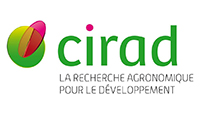Hybrid capture-based next-generation sequencing of new and old world Orthohantavirus strains and wild-type Puumala isolates from humans and bank voles
Résumé
Highlights:
• Genomic characterization of viruses is essential to understand their pathophysiology.
• We have designed a targeted hybrid-capture panel encompassing all Orthohantaviruses.
• We have sequenced the first complete Swedish wild-type Puumala virus genomes.
• Puumala virus from humans and bank voles revealed a close phylogenetic relationship.
• This method could be used for diagnostic purposes and Orthohantavirus surveillance.
Abstract:
Orthohantaviruses, transmitted primarily by rodents, cause hemorrhagic fever with renal syndrome (HFRS) in Eurasia and hantavirus pulmonary syndrome in the Americas. These viruses, with documented human-to-human transmission, exhibit a wide case-fatality rate, 0.5-40 %, depending on the virus species, and no vaccine or effective treatment for severe Orthohantavirus infections exists. In Europe, the Puumala virus (PUUV), carried by the bank vole Myodes glareolus, causes a milder form of HFRS. Despite the reliance on serology and PCR for diagnosis, the three genomic segments of Swedish wild-type PUUV have yet to be completely sequenced. We have developed a targeted hybrid-capture method aimed at comprehensive genomic sequencing of wild-type PUUV isolates and the identification of other Orthohantaviruses. Our custom-designed panel includes >11,200 probes covering the entire Orthohantavirus genus. Using this panel, we sequenced complete viral genomes from bank vole lung tissue, human plasma samples, and cell-cultured reference strains. Analysis revealed that Swedish PUUV isolates belong to the Northern Scandinavian lineage, with nucleotide diversity ranging from 2.8 % to 3.7 % among them. Notably, no significant genotypic differences were observed between the viral sequences from reservoirs and human cases except in the nonstructural protein. Despite the high endemicity of PUUV in Northern Sweden, these are the first complete Swedish wild-type PUUV genomes and substantially increase our understanding of PUUV evolution and epidemiology. The panel's sensitivity enables genomic sequencing of human samples with viral RNA levels reflecting the natural progression of infection and underscores our panel's diagnostic value, and could help to uncover novel Orthohantavirus transmission routes.
Origine : Publication financée par une institution
licence : CC BY NC - Paternité - Pas d'utilisation commerciale
licence : CC BY NC - Paternité - Pas d'utilisation commerciale



